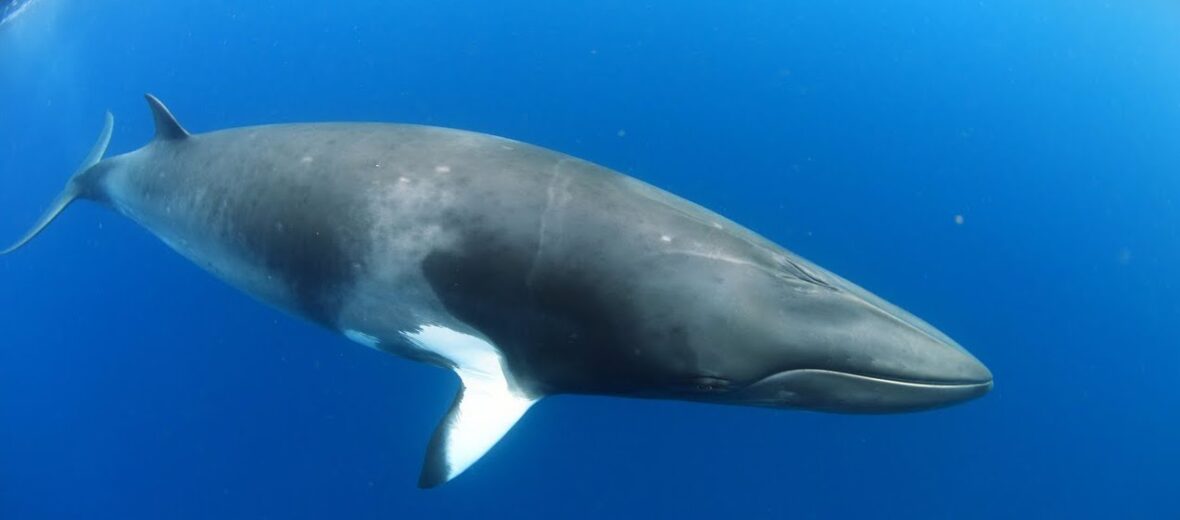
The minke whale (pronounced minky) is the second smallest known whale, after the pygmy right whale. There are 2 subspecies, the Atlantic and southern. They are differentiated by morphology, size, and locale inhabited. These cetaceans typically inhabit northern polar waters, but they can be found in sub-Arctic waters in north to the sub-Antarctic waters in the south. Due to their diminutive size, they were relatively safe during the 19th and 20th centuries among the big whaling era. There are approximately 200,000 remaining to date and are listed as Least Concern by the IUCN.
First the Stats…
Scientific name: Balaenoptera acutorostrata
Weight: Up to 12,000 lbs.
Length: Up to 18 feet
Lifespan: Up to 50 years
Now on to the Facts!
1.) Like the massive blue whale, these whales are baleen whales. Filter feeders.
2.) They feed on krill, small fish, and squid.
3.) Orcas prey on these beautiful whales.
4.) Minke whales have approximately 300 baleen plates in their mouth. These plates are about 12 inches long. These plates are used to capture food and filter the water back out.
5.) The minke whale is the most abundant known whale in the Rorqual family; which includes the humpback whale, the blue whale, the sei whale, Bryde’s whale, the fin whale, and Omura’s whale.
But wait, there’s more on the minke whale!
6.) You can tell, in part, how old a minke whale is by counting the waxy layers in their ears.
7.) They are able to hold their breath for up to 20 minutes. This pales in comparison to the sperm whale’s 90 minutes.
Did you know…?
Being among the fastest of the baleen whales, they can reach speeds of up to 18 mph.
8.) The gestation (pregnancy) period is up to 10 months and the female births a single 6 foot long calf.
9.) Females breed each year and ween their calf after just 6 months.
10.) The minke whale is typically a solitary creature but can be seen in small pods of up to 4 whales.
But wait, there’s still more on the minke whale!
11.) Minkes are able to produce sounds of up to 150 decibels!
12.) They communicate via vocalizations, breaching, and lobtailing (when a whale slaps its tail against the water’s surface).
Now a Short Minke Whale Video!
Also, check out the Critter Science YouTube channel. Videos added frequently!
Want to suggest a critter for me to write about? Let me know here.



